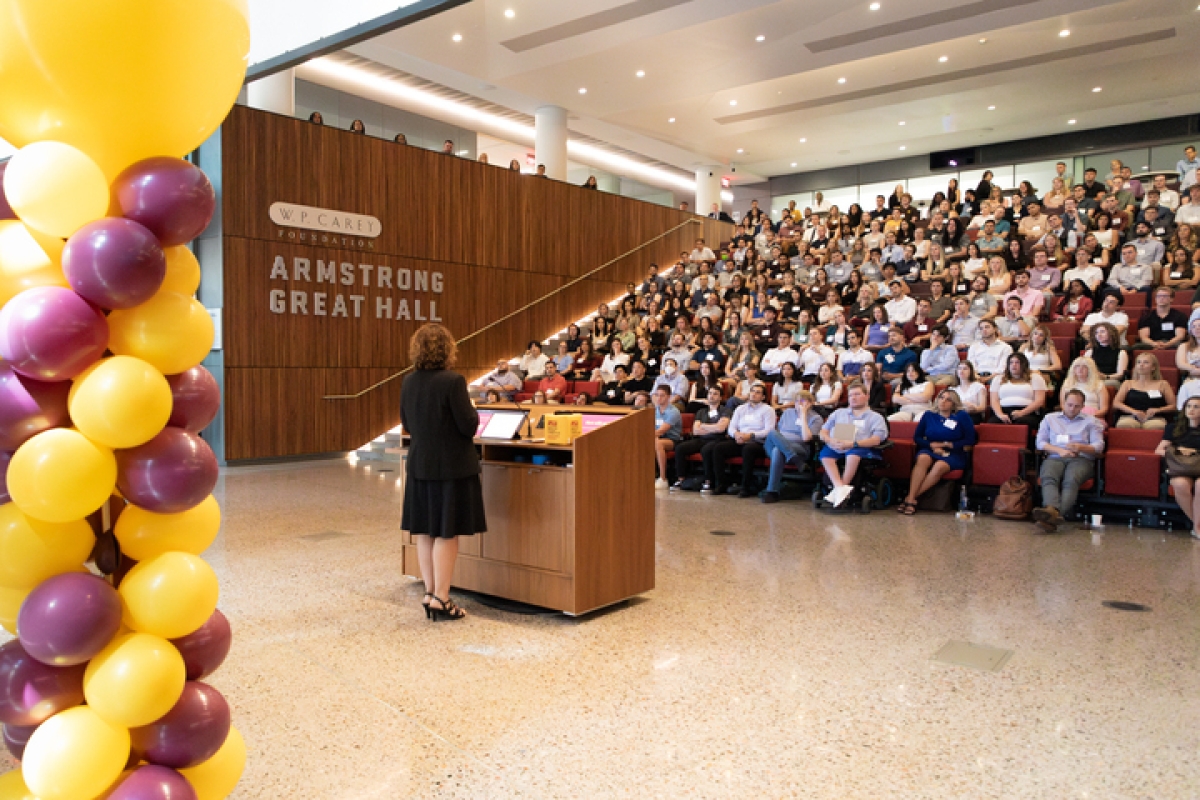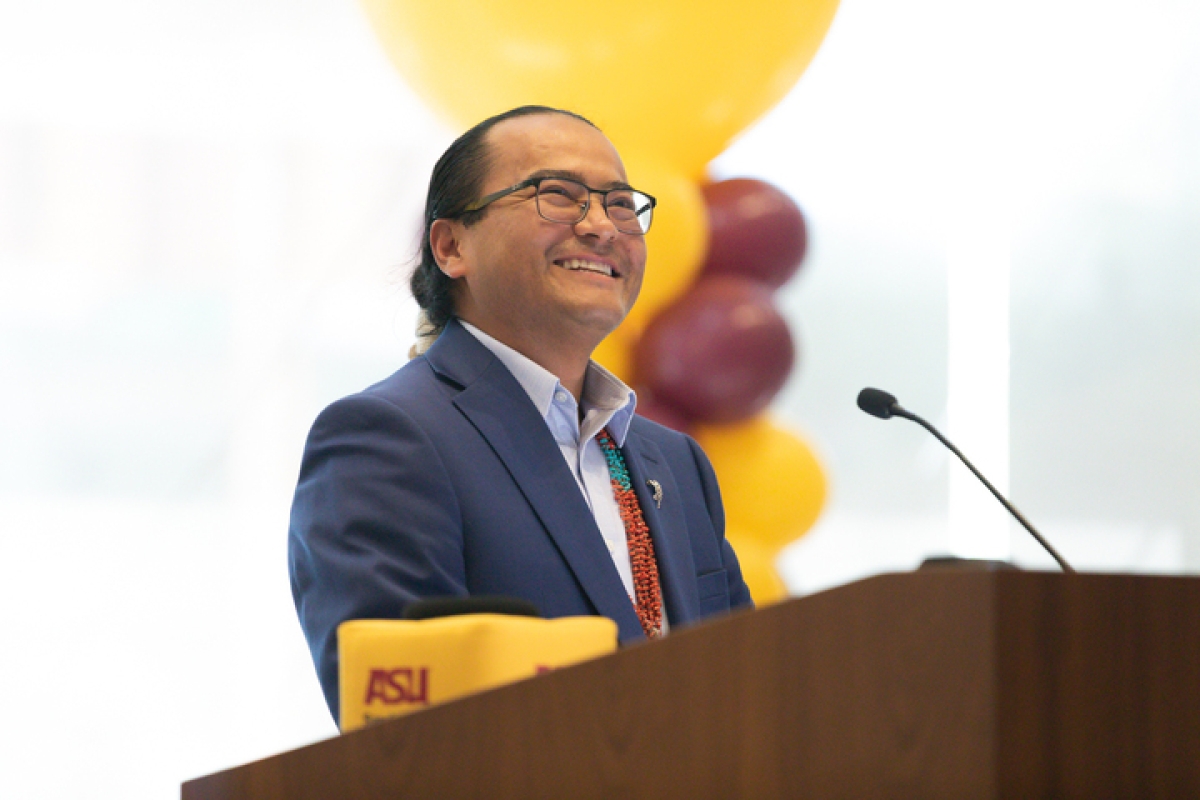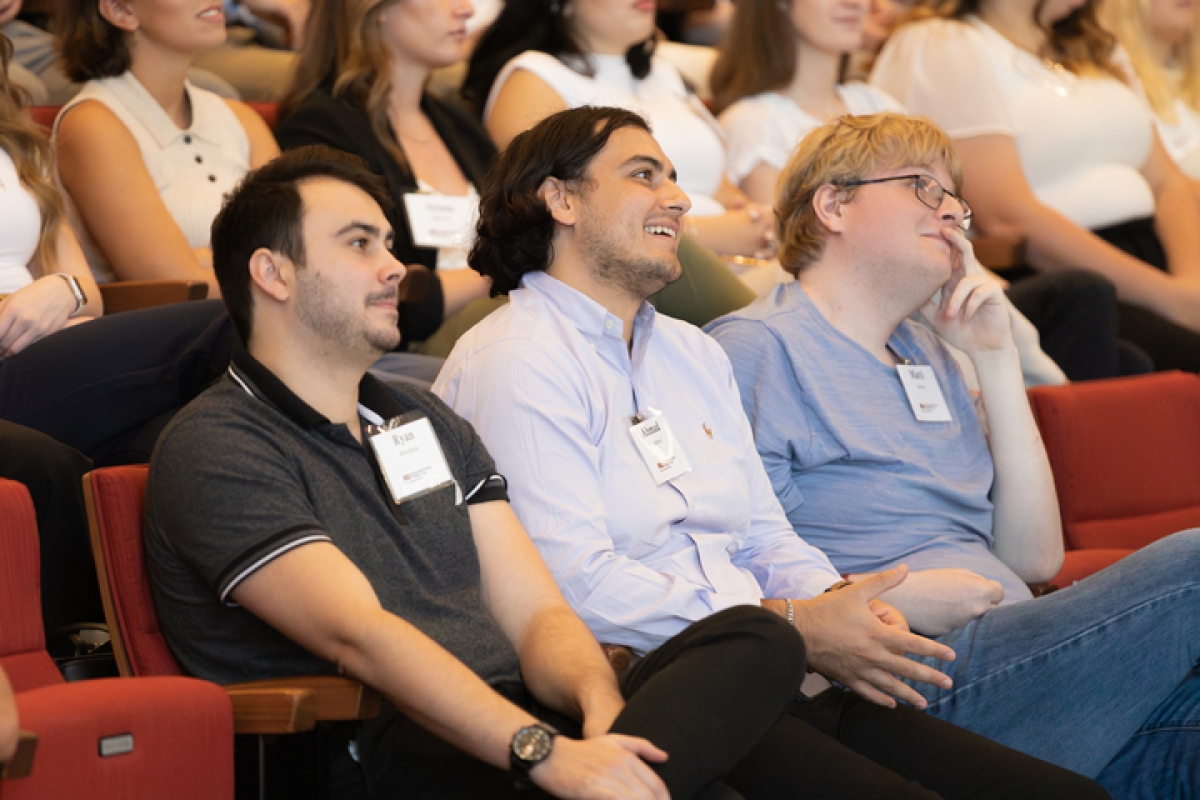ASU Law welcomes its most highly credentialed class

This fall, for the sixth year in a row, the Sandra Day O’Connor College of Law welcomed its most highly credentialed class of incoming students. Photo by Tabbs Mosier/Arizona State University
Jordan Pittman moved to Phoenix several years ago from Missouri to work at the Maricopa County Superior Court. He wanted to be part of making laws, but never thought law school would be the path forward for him.
“I didn’t think law school was for people like me, but I eventually ended up here after I realized it helps to know the law to make the law,” Pittman said.
Pittman is just one of nearly 210 Juris Doctor students joining Arizona State University's Sandra Day O'Connor College of Law this fall.
For the sixth year in a row, the entering class of students taking first-year JD courses is ASU Law's most highly credentialed ever, with a median LSAT of 167 and a median undergraduate GPA of 3.90. In addition, five students are part of the JD with Advanced Standing, or JDAS, program, which allows students with a degree from a law school outside the U.S. to complete their JD at ASU Law within two years.
Interest in graduate degrees continues to rise, with students from multiple disciplines hoping to enhance their current careers or pivot to a new one.
Master’s degree programs at ASU Law are for individuals seeking career advancement by deepening their legal knowledge but are not planning to take the bar exam and become a lawyer. More than 335 students are joining the Master of Legal Studies, Master of Human Resources and Employment Law, Master of Laws and the Master of Sports Law and Business programs this fall.
One such student is Michaela Courtemanche, assistant director of football operations for Sun Devil Athletics. She’s beginning her Master of Legal Studies degree with an emphasis in sports law and business in order to apply the law in the sports world.
“I want to understand the contracts, policies and regulations that are always prominent in a sports organization,” Courtemanche said. “I am most excited about the sports-related classes and to improve my knowledge for my current role. I want to be able to take this information with me and grow my expertise in football operations as well as the business side of football.”
This new incoming class comes to ASU Law from eight countries, multiple Indigenous nations, 34 states and four military branches. They join a female-majority student body of more than 1,760 students enrolled in six degree programs and 21 emphasis areas.
In line with ASU Law’s commitment to inclusive excellence and access to higher education, 15% of the incoming students are first-generation college graduates.
“I am thrilled to welcome this inspiring and accomplished group of students to ASU Law,” said Willard H. Pedrick Dean and Regents Professor of Law Stacy Leeds. “In addition to welcoming the first-generation college students, it’s extraordinary to see more than 73% of our incoming students are the first in their family to attend law school and pursue graduate degrees. We are honored to provide them with a legal education that empowers them to become skilled and compassionate advocates and difference makers in the communities they serve.”
Orientation convened at the Beus Center for Law and Society on ASU’s Downtown Phoenix campus on Aug. 11 and 14, ahead of the first day of classes, so students could meet each other, tour the ASU Law building and hear from faculty and staff members.
Jessica Sanchez, the immediate past president of the State Bar of Arizona and 2006 alumna of ASU Law, welcomed the incoming students with some encouraging remarks to help them navigate their legal education journey.
“Take advantage of student organizations,” Sanchez said. “You get to learn so much about the community around you; it is an enriching experience. Take advantage of the time here. Look at opportunities you might not have thought of before, and you might find your passion.”
Sanchez, who initially came to law school to be a public defender, eventually found her way to education law, which she now practices full time in the Valley.
Buu Nygren, president of the Navajo Nation, also addressed the incoming class to share his excitement and encouragement.
“Continue to believe in yourselves and remember why you came to law school,” Nygren said. “Remember the skills that got you here.”
Nygren’s spouse, First Lady Jasmine Blackwater-Nygren, who earned her JD and certificate from the Indian Legal Program at ASU Law in 2020, was also on hand. ASU Law is committed to expanding its partnership with the Navajo Nation.
Incoming first-year law student Crispin South said he was drawn to ASU Law because of the Indian Legal Program. South, a member of the Choctaw Nation, has worked in government relations for his tribe.
“I’ve been able to see firsthand the legal challenges tribes face and I want to help find solutions,” South said of why he decided to pursue law school.
South isn’t the only new student who hopes to make a difference in their community after earning their JD. Hannah Clark, another incoming first-year student, has community service at the top of her mind as she starts this new chapter of her life.
“As an Arizona native, it was always my dream to come back to Arizona, study law and give back to the community that raised me,” she said.
More Law, journalism and politics

Annual John P. Frank Memorial Lecture enters its 26th year
Dahlia Lithwick, an MSNBC analyst and senior legal correspondent at Slate, is the featured speaker at the School of…

The politics behind picking a romantic partner
A new study reveals the role that politics play when picking out a romantic partner — particularly for older adults.“Findings…

Tips to make tax season less taxing
When it comes to highly unpleasant experiences, filing taxes is probably up there with root canals — which is why people put off…




